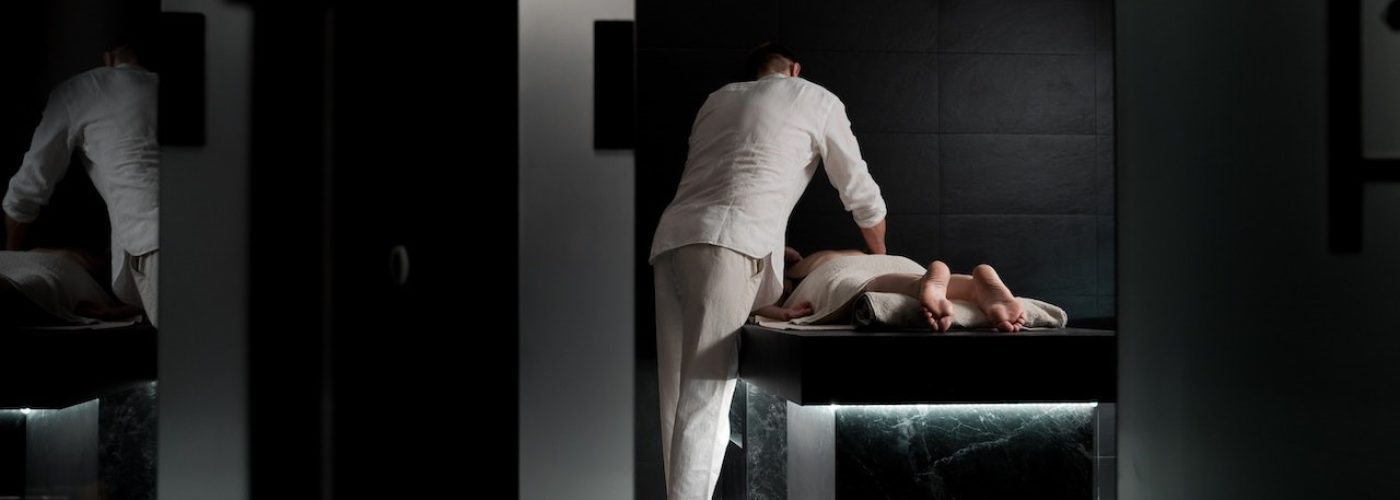Want to succeed in today’s fast-paced business landscape? Stay informed and connected to the latest trends, understand them, and adapt to those that make sense for your business.
The salon and spa industry is no exception to the winds of change – as the expectations of clients evolve, staying on top of design trends is essential for setting your business apart from your competitors.
If you’re looking for inspiring design trends for your salon or spa, you’ve come to the right place. Below, we explore the latest trends that cater to modern salons and health spas, focusing on the ones that blend wellness with a pleasing aesthetic experience.
Sustainable Materials
Sustainable materials are not only good for the environment, but they’re also typically extremely durable and do not negatively impact the health and well-being of your clients.
When incorporating sustainable materials into your salon or spa, it’s good to consider every aspect of your space. When it comes to materials, opt for eco-friendly options like reclaimed wood, recycled glass, and low-VOC paints whenever possible. Energy efficiency also matters, so swap out traditional lighting fixtures for LED lights that consume less energy.
You may also want to install programmable thermostats to regulate heating and cooling efficiently. Additionally, recycling and composting stations in staff areas can encourage responsible waste management, demonstrating your commitment to a greener future.
Biophilia
Biophilia is certainly no new trend in spas, but it’s become even more popular these past few years. This trend, which centers around reconnecting with nature by bringing the outdoors inside the salon or spa, is more relevant than ever in our increasingly digital world.
To implement biophilic concepts into your space, prominently display lots of indoor plants and opt for natural elements like stone finishes and wood textures. If possible, design your space with outdoor seating areas or gardens for clients to enjoy before or after their treatments. The soothing presence of nature can have a profound impact on their overall experience. Large windows that provide lots of natural light and offer glimpses of outdoor greenery can also help make your indoor space more inviting and relaxing.
Technology Integration
We live in digital times, so embracing technology is essential for businesses wanting to stay competitive and successful. The basics include having a user-friendly, mobile-responsive website that allows clients to view services and easily book appointments.
When it comes to integrating technology into your physical space, consider using touchless systems, such as contactless check-in and payment options, smart mirrors with customizable lighting, and automated fragrance diffusers.
If you want to go all in, consider installing immersive virtual reality rooms so your guests can meditate in beautiful or otherworldly environments. Technology can also help you manage client appointments more efficiently: salon appointment software solutions are ideal for streamlining scheduling and helping you track client preferences and histories.
Minimalist Aesthetics
A design that emphasizes simplicity and functionality, minimalism is at home at salons and spas. Adopting this aesthetic is easy as long as you remember the mantra: less is more. Stick to a monochromatic or limited color palette, incorporate clean lines in your furniture and decor, and maintain clutter-free spaces. You can also use soft, natural colors like beiges, grays, and browns to create a serene atmosphere.
True minimalist design also prioritizes functionality, so it’s important that every piece in your space serves a purpose and contributes to the overall sense of tranquility. Furniture should be comfortable, eco-friendly, and simple but sleek. Decor is, of course, allowed (encouraged even), but it, too, should have a purpose.
Wellness-Focused Design
To create a truly holistic experience for your clients, one that goes beyond beauty and treatments and leaves a lasting impression in their memory, embrace design that focuses on improving the health and well-being of your clients. Include elements like calming color schemes, ergonomic seating, and soundproofing to create serene wellness zones.
If you have a spa, designate areas for activities like yoga, meditation, and perhaps even nutritional consultations. The idea is to offer a range of wellness services, whether that’s mindfulness sessions, aromatherapy workshops, or simple herbal teas, to encourage a slow and memorable wellness experience.





